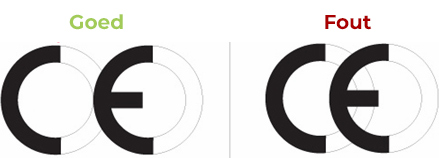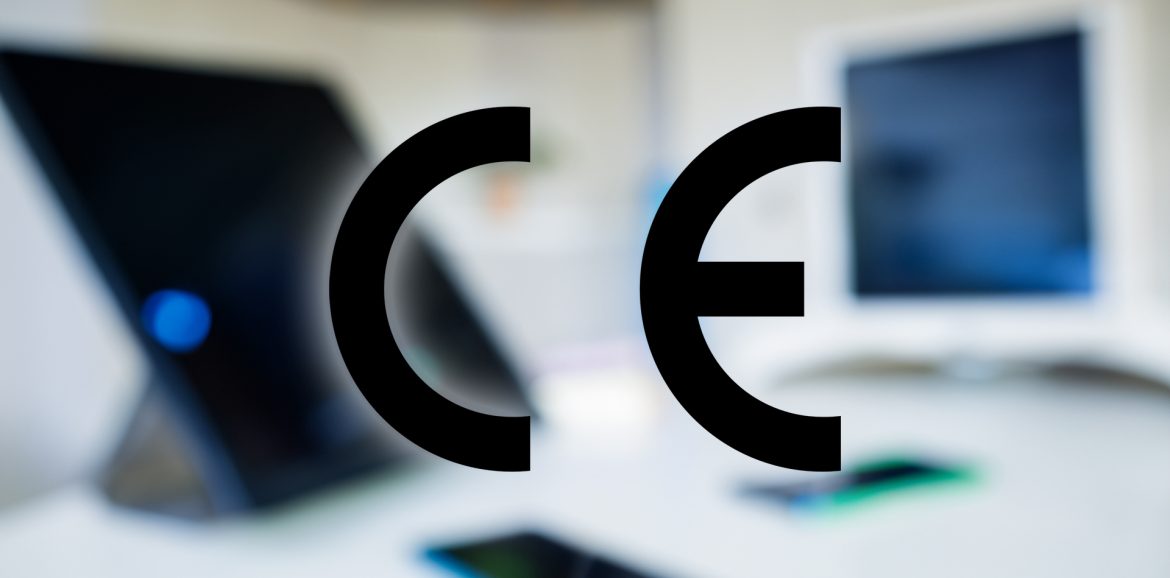The CE mark is an essential component of product safety within the European Economic Area (EEA). It indicates that a product meets legal health, safety and environmental requirements. But what exactly does the mark mean, why is it important, and what risks do you run with products without the CE mark? In this blog, find out everything you need to know about the CE mark and its implications, including the risks of products from countries like China and how insurance companies deal with them.
What is the CE mark?
The CE mark stands for Conformité Européenne and is a manufacturer’s declaration that a product complies with applicable European directives. The mark is mandatory for a wide range of products, including electronic devices, toys, medical devices such as hearing aids and hearing protection, and more.
The CE mark has three main functions:
- User protection: It ensures that products are safe to use.
- Promoting free trade: It ensures that products can be traded freely within the EEA.
- Guarantee of environmental friendliness: The label limits negative impact on the environment.
Why is the CE mark important?
Products without a CE mark can pose serious risks. Consider electrical appliances that overheat and cause fires, toys that contain harmful substances, or medical devices such as hearing aids that malfunction. The CE mark ensures that consumers are protected from such dangers.
A product with a CE mark provides assurance that:
- It has been tested for safety.
- It meets European standards.
- Its use does not pose unnecessary health or environmental risks.
The consequences of a missing seal of approval
If a product does not have a valid CE mark, consumers may lose their right to compensation. For example, if an appliance without the CE mark causes a fire, insurers often refuse to pay out. This makes the CE mark important not only for your safety, but also for your financial security.
How is a CE mark awarded?
Manufacturers are responsible for assigning the CE mark to their products. This process includes:
- Technical testing: The product must comply with all relevant guidelines.
- Documentation: The manufacturer shall compile a technical file with all test results.
- Self-declaration or external verification: Some products require independent certification by a Notified Body.
The seal is applied only when the product meets all requirements.
Products from China: What to look out for?
Platforms such as AliExpress, Wish and Temu are popular for cheap products, but often these products lack a valid CE mark. This poses several risks:
- Improper safety standards: Products may contain hazardous substances or not be safe to use.
- Fake labels: Many Chinese manufacturers use a logo that looks like the CE mark, but in reality it means “China Export” and has nothing to do with European standards.
- Inadequate warranty: In the event of damage or defects, the seller often does not provide adequate support.
The impact of Chinese products on hearing protection and hearing aids
In hearing protection and hearing aids, the lack of a CE mark can have major consequences. Consider hearing protection that provides insufficient attenuation or hearing aids that do not work accurately enough, which can cause permanent hearing damage.
How do you recognize a fake seal of approval?
Pay attention to the details of the CE logo. In a genuine CE mark, the letters are well positioned and the logo conforms to the official dimensions. In counterfeits, the letters are often too close together or the shape is irregular.

The CE mark and insurance
An important aspect of the CE mark is its role in claims for damages. If a product without the CE mark causes damage, such as fire or injury, there can be major financial consequences:
- No payment from insurers: Insurance companies often require products to meet applicable safety standards. If a product without a CE mark causes damage, they often refuse to cover the cost.
- Legal issues: Consumers may have difficulty recovering damages from the manufacturer or seller, especially if they are located outside the EU.
This emphasizes the importance of checking the CE mark before making a purchase.
Hearing aids and hearing protection: why the CE mark is indispensable
Hearing aids
Hearing aids fall under medical devices and have strict regulations. The CE mark guarantees that:
- The device is safe for daily use.
- It meets audiological specifications.
- It contains no harmful substances.
Hearing protection
CE-marked earplugs and earmuffs are tested for effectiveness and safety. This means that they:
- Provide reliable protection against hearing damage.
- Being comfortable and durable.
- Do not cause allergic reactions.
How do you check if a product has a CE mark?
- Inspect the logo: Check that the CE logo meets official specifications.
- Ask for documentation: Ask the manufacturer or vendor for a technical file or Declaration of Conformity.
- Check the manufacturer: Search online for the manufacturer to see if it is known in the EU market.
Conclusion
The CE mark is critical to your safety and security when using products. It indicates that a product meets strict European safety, health and environmental standards. The absence of this mark, especially with products from countries such as China, carries major risks such as damage, injury and financial problems. Consider, for example, insurance companies that deny claims for damages in the case of products without the CE mark.
With hearing aids and hearing protection, the CE mark is especially important because they directly affect your health. Therefore, always check whether a product has a valid CE mark before you buy it. By choosing products with this mark, you not only protect yourself, but also your rights as a consumer.







